US textile and apparel imports further rose in Mar
With the increase of vaccination rate and rapid recovery of consumption in the United States, US apparel retail sales rose by 108% in March compared with the same period of last year. (More details were further analyzed at US apparel retail sales in Mar showed the steepest increase since pandemic.) The retail sales was low affected by the pandemic Last year, but it still maintained a growth state in Mar 2021 compared with the same period in 2019, indicating that the apparel in the United States recovered slightly and quickly. From the data of US textile and apparel imports in March, the recovery was also good.
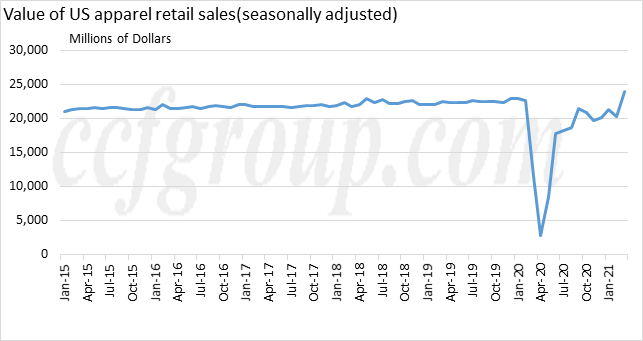
US textile and apparel imports reached 6.746 billion square meters in Mar, up by 61.1% year-on-year, 16.2% month-on-month and 40.8% compared with the same period in 2019 respectively. The imports in Q1 moved up by 28.1% year-on-year and 14.1% compared with the same period in 2019. The volume from China was 2,770 million square meters, up by 194.9% year-on-year, 6.2% month-on-month and 80.9% compared with the same period in 2019 respectively. In Q1, imports from China moved up by 58% year-on-year and 16.6% compared with the same period in 2019. From proportion of US textile and apparel imported from China, the share reached 41.1% in Mar, down 3.9% month-on-month but up 18.6% year-on-year. The share was at 43.6% in Q1.
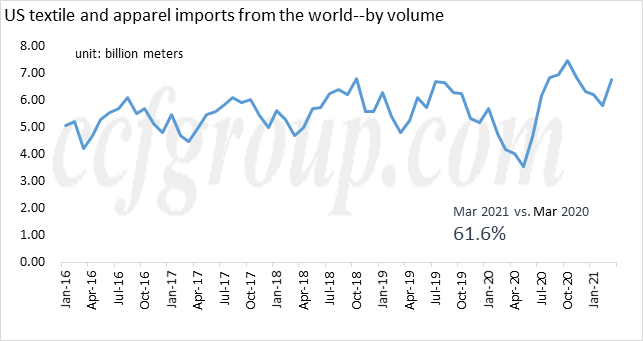
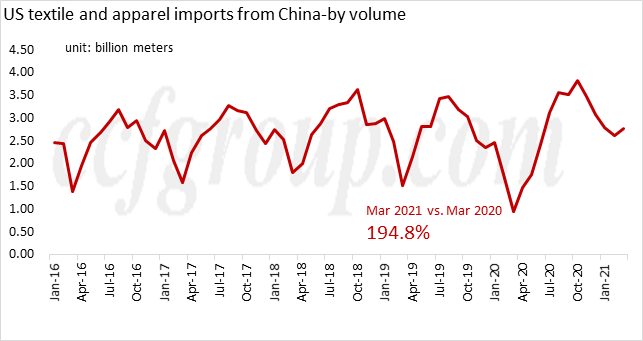
US apparel imports reached 2.498 billion square meters in Mar, up by 48% year-on-year, 20.7% month-on-month and 20.9% compared with the same period in 2019 respectively. The imports in Q1 moved up by 11.6% year-on-year but down 1.6% compared with the same period in 2019. The volume from China was 753 million square meters, up by 174.4% year-on-year, 4.8% month-on-month and 58.1% compared with the same period in 2019 respectively. In Q1, imports from China moved up by 34.8% year-on-year but down 8.9% compared with the same period in 2019.
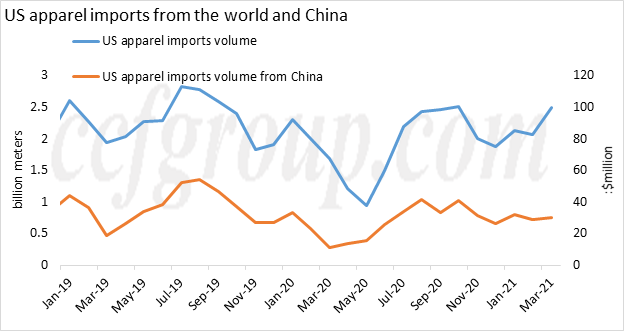
Since August last year, US textile and apparel imports volume has gradually turned positive year-on-year, and further rose this year. In the first quarter of this year, excluding the impact of the pandemic, there was still a large growth compared with 2019.
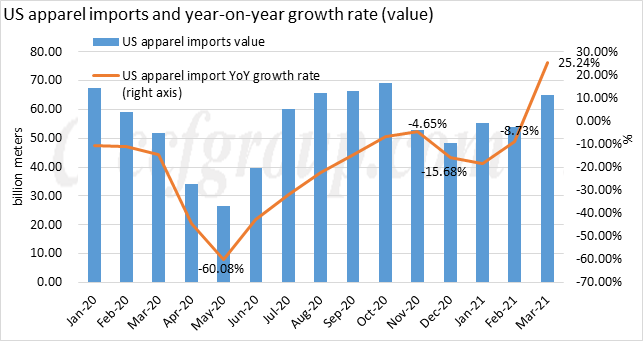
Thanks to consumers’ resumed demand and a more optimistic outlook for the US economy, US apparel imports went back to the robust recovery trajectory in February 2021. Specifically, the value of US apparel imports in February 2021 went up by 4.5% from January 2021 (seasonally adjusted) after a straight three-month drop. Even though the absolute value of US apparel imports in February 2021 was still 8.7% lower than last year, it was the best performance since December 2020. However, the value of US apparel imports in March 2021 climbed up by 25.2% from February 2021.
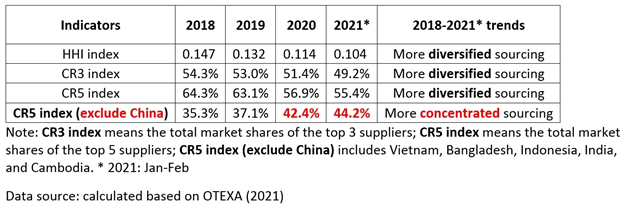
Data indicates that China remains the top apparel supplier for the US market both in quantity (36%) and value (22.5%) in 2021 (Jan-Feb). Meanwhile, US fashion brands and retailers continue to reduce their “China exposure” amid the pandemic. For example, both the HHI index and market concentration ratios (CR3 and CR5) suggest that apparel sourcing orders are gradually moving from China to other Asian countries.
In the first quarter of 2021, the growth rate of US textile and apparel imports from China was faster than the total import demand. So what are the main origins of US textile and apparel in the first quarter?
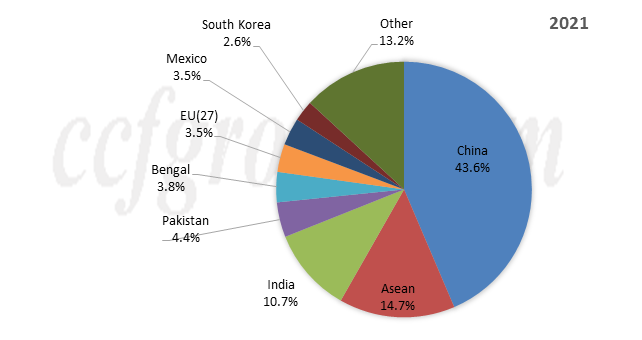


In the first quarter, China was the largest market for US textile and apparel import, accounting for 43.6%, followed by 14.7% of ASEAN, and India, Pakistan and Bangladesh, accounting for 10.7%, 4.4% and 3.8% respectively. In April, severe pandemic in India could pull business away from US. Currently, the vaccination rate in the United States has reached 79.14%, which is expected to reach 90% by the end of May, and the recovery of consumer demand will further accelerate.
- Top keywords
- Cotton Price
- Cotton Futures Price
- Cotton Futures
- CZCE
- PTA Futures Price
- Chemical Fiber
- Polyester Prices
- Wool price
- PTA Futures
- Shengze Silk
- China
- Yarn Price
- price
- China Textile City
- Fibre Price
- Benzene Price
- Cotton
- Index
- Cotton Index
- PTA
- fabric price
- NYMEX
- Top 10
- textile industry
- Spot Cotton
- Cotton Yarn
- Polyester Price
- Futures
- PTA Price
- cotton yarn price

